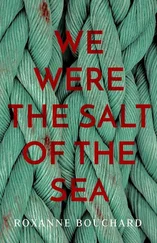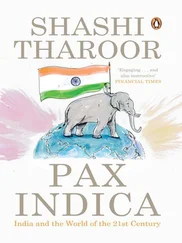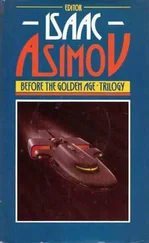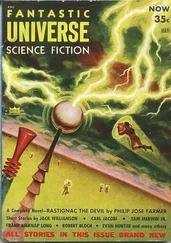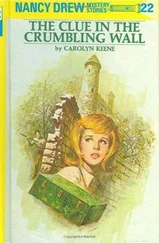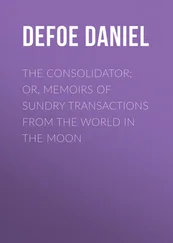In the media, comments on the political exploitation of the anniversary stood in the foreground, which, amongst other things, was described as “disgraceful” 15in a comment by Rolf R. Lautenschläger in the “Tageszeitung” (German newspaper) on 13 thAugust 2001. For the victims of the SED regime, on the other hand, it was unthinkable that an SPD and PDS coalition could govern the fate of the capital at this point in time, with the latter being the successor of the party – the SED – that stood for injustice, the building of the Wall, arbitrariness, repression, hundreds of thousands of unjust political verdicts and hundreds of deaths at the border and the Wall. An important role was played by the fact that the PDS had not apologized for the border regime and the building of the Wall and the deaths until then. Governing mayor, Klaus Wowereit, also requested that the PDS “apologise to the many victims of the SED dictatorship”. 16In addition, CDU member, Frank Steffel, explained that “yesterday’s party of riflemen from the Wall should not supply the senators of tomorrow”. 17The PDS leading candidate, Gregor Gysi, declined the request for an apology, but pointed out that the “inhumane border regiment” could not be justified in any way. 18For the victims of the SED, the games being played by the coalition were unbearable. They renewed their calls for a dignified memorial in central Berlin and threatened to boycott the upcoming memorial event. When PDS representatives appeared on Bernauer Straße with a wreath during the memorial event, a political prisoner of the GDR, Alexander Bauersfeld, removed it and stamped on it amidst loud protest in front of the memorial Wall. He was arrested by the police for his actions.
“GUERILLA REMEMBRANCE” AND VISIBLE COMMEMORATION
Anyone who had hoped that the Berlin Senate would work on making a memorial in the city (more) visible after the 40 thanniversary of the building of the Wall was to be disappointed. The memorial centre on Bernauer Straße continued to be run on a voluntary basis and only received limited project financing. This did not diminish the great commitment of the association members but could not replace long-term work in a secure institution. Any change in the poor treatment of the official memorial site to the Berlin Wall and division was not on the horizon.
On the 15 thanniversary of the fall of the Wall in 2004 an initiative by Alexandra Hildebrand, head of the Mauer Museum – Museum “Haus am Checkpoint Charlie” – burst into this void. Her temporary memorial to be put up on a abandoned area at Checkpoint Charlie did not only cause a stir on the Berlin politics scene. The memorial was made up of a replica of the Wall and over 1,000 wooden crosses – most of which were given a name. For many victims and their families, as well as for many visitors to Berlin, the memorial satisfied a need for an authentic place of memorial for the Wall (ill.2). The memorial and the public response to it made it unmistakably clear how great the unmet public need was, both for the city’s residents and for tourists, for a vivid place where the Wall and the division of the city could be conveyed in a meaningful way. References to the memorial on Bernauer Straße came to nothing – it was considered too objective and its location outside the centre of the city made it remote. For the first time, may victims felt they had been taken seriously by Alexandra Hildebrandt’s emotional memorial and its use of forms (ill.3).

Fig. 2
© Archiv Bundesstiftung Aufarbeitung
Whilst victims and tourists to the city welcomed the memorial as a powerful symbol, criticism was aimed at the instillation’s style. It was argued that the number of crosses could be seen as a reference to the number of victims, which was not possible to prove. The use of forms was also criticised for mirroring the Memorial to the Murdered Jews of Europe, which had also only just been opened. Critics claimed that the analogy – 6,000 concrete blocks at the Jewish memorial and over 1,000 crosses at this memorial – would cause an equalisation between National Socialism and the SED dictatorship. Undeterred by the critical voices against the memorial, Alexandra Hildebrandt fought back, as she had done on other occasions, against the dismantling of the memorial, which she had initially claimed would be a temporary one. She organised demonstrations and victims of the communist dictatorship chained themselves to the crosses to protest against their being taken down. They argued that this was the only site in Berlin where the victims of the SED dictatorship were suitably brought into public consciousness. These “guerilla memorials” brought about an end to the inaction in Berlin’s politics. In November 2004, the “Abgeordnetenhaus” (Berlin House of Representatives) submitted two proposals by the CDU and B90/Die Grünen (the Green Party), in which the Berlin Senate was called upon to submit a concept for the preservation of the remaining Wall segments and the remembrance of the SED dictatorship. Both proposals called for the Berlin Senate to be more proactive in their efforts to remember the second dictatorship and its victims in Berlin.
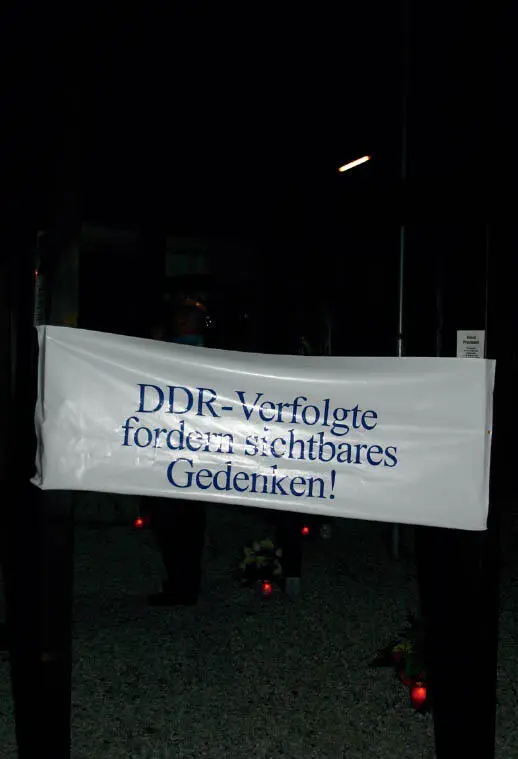
Fig. 3
© Archiv Bundesstiftung Aufarbeitung
They claimed there were not only “shortcomings in the visible memorials to the Wall as a symbol of the history of the city, Germany and the world, but also in the comprehensive representation of the SED dictatorship in the areas of control, daily life and resistance.” 19
In spring 2005, the Berlin House of Representatives organised a hearing to discuss “public engagement with the history of the capital city, Berlin-Wall memorials and the SED past”.
In light of the memorial site on Checkpoint Charlie (initiated by Alexandra Hildebrandt) and the public reaction to it, Berlin’s Minister of Culture, Thomas Flierl (PDS/Die Linke), had already begun to develop a concept for the design of a Wall memorial in summer 2004. On the one hand, the concept intended to secure and preserve any remains of the Wall still in the city as well as to protect from further development any sites where it was still possible to imagine the extent of the Wall and the death strip. On the other hand, any existing memorials should be made more visible and also refer to each other. There were already around 60 memorials which remembered escapees, or memorials made out of remains from the Wall, such as those located on Potsdamer Platz. Amongst these memorials was a double row of cobbled stones which had marked the path of the Wall since the start of the 1990s. However, recognising the stones was increasingly difficult as they were not used exclusively for marking the path of the Wall, but also for repairing damaged streets. There were no funds available to introduce a metal strip with the dates of the building and the collapse of the Wall, which had made mapping the path of the Wall possible.
The concept by the Berlin Senator for Culture was completed in 2006. It was intended as a comprehensive starting point for finding a way to commemorate the division of the city and the victims of the dictatorship for the 50 thanniversary of the building of the Wall in 2011. Thus, the area on Bernauer Straße was to be preserved on a large scale for the memorial; existing ground monuments such as the basements of the houses demolished for the clear field of fire were to be exposed and related to the stories and fates of the people associated with them. Until then, the site had drawn its effectiveness mainly from the events and campaigns organised by the association. A historical park was now to be designed; the plans envisaged a concept which covered the entire area up to “Mauerpark”. The concept finally achieved what had been called for again and again since 1990. 20
Читать дальше



